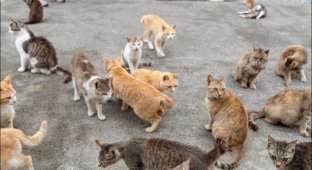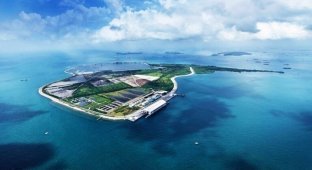William Goodall - Singapore's Robinson Crusoe (6 photos)
The reasons for becoming a hermit are usually forced. But this man is a rare exception. And he made his choice voluntarily. 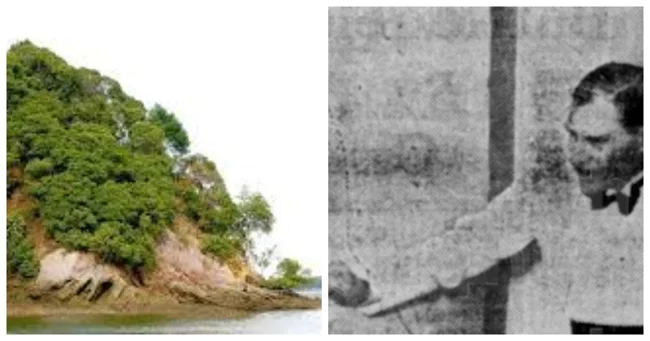
Between mainland Singapore and the Malay Peninsula, in the Strait of Johor, lies the small island of Pulau Sarimbun. The island is located in the Singapore Air Force's live-fire range and is closed to visitors. But back in the early 1900s, it was a popular picnic spot and served as home to an Englishman named William Arthur Bates Goodall for almost a decade. 
Pulau Sarimbun Island
William Goodall was born in Eccles, Manchester, in 1880. After leaving high school, Goodall joined the Manchester Regiment of the British Army as a private and fought in the Second Boer War. For his exploits, he was awarded the King and Queen of South Africa Medal. After the war, Goodall left the military and pursued a civilian career. He spent some time in Sumatra, where he tried his hand at tin mining and tea growing. He then took a job with the Singapore Water Department, where he helped build the Pierce, Gunong Pulai and Pontian reservoirs.
Goodall discovered Pulau Sarimbun in the early 1920s when he and some friends went on an expedition and landed on the island. They found the island delightful and decided it was "an ideal place for swimming and picnicking." In the center was a hill with a beautiful view of the sea and the island of Singapore with its rolling land and rubber, coconut and pineapple plantations. On the other side was the town of Johor Bahru with bungalows on the outskirts and a village by the water. 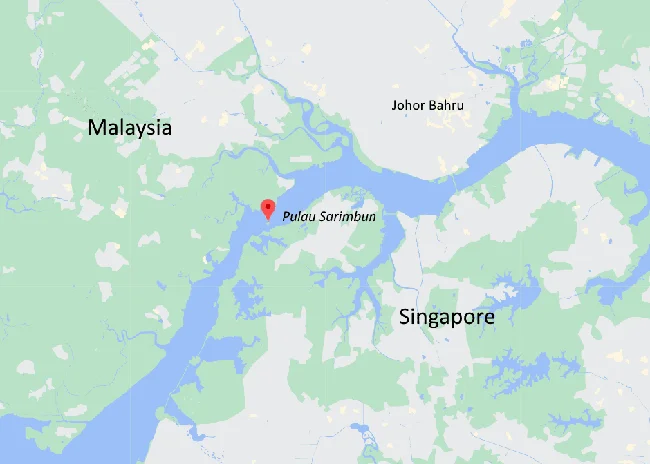
The group raised money, built a small hut on the hill, and used it for recreation.
But as the years went by, Goodall began to spend more and more time on the island. When the contracts for the Singapore reservoirs ended in 1932, he decided to settle there permanently. Goodall felt like a recluse:
Being Robinson Crusoe is a delightfully quiet existence for those who are not tied to photographs, a club, a hotel bar, or the company of friends and acquaintances, and for those who love nature. 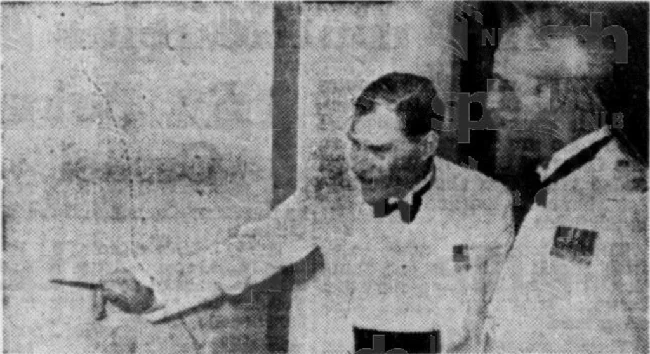
William Arthur Bates Goodall
Living alone on the island was difficult, and the work was exhausting. The launch and two dinghies required constant attention. The mooring buoy had to be changed every six weeks. Rubbish had to be burned or thrown into the sea, and water pumped into the water tower twice a day. Fruit trees had to be sprayed and treated. Undergrowth had to be cut down, and the house was constantly in need of minor repairs. Eventually, he grew tired and hired two Chinese to help him with household and paperwork, as well as a Javanese boatman.
Goodall's unique lifestyle caught the attention of a British journalist, and in 1937 the London Evening News ran a slightly embellished article:
If you happen to pass Pulau Serimbun at sunset - which is unlikely, as it is off the beaten track - the notes of a Boer bugle will float over the waves and the Union Jack will wave slowly above the ground. You may be lucky enough to see Mr W. A. B. Goodall salute during this evening ritual, for the island is his personal kingdom... Here he hopes to live out his days peacefully, ruling over four subjects who are also his friends - a Cambridge-educated Chinese, two Chinese servants and a Malay boatman. 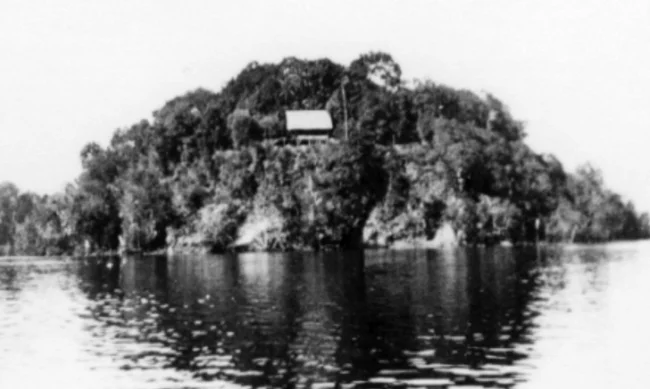
Although Goodall was pleased by the attention, he denied that the flag-raising ritual was a daily occurrence.
In addition, the "Cambridge-educated" Chinese servant was actually a Singaporean student who had earned a Cambridge certificate in a local exam. He helped Goodall with the paperwork.
Goodall's story spread like wildfire, and he received numerous fan letters from around the world. 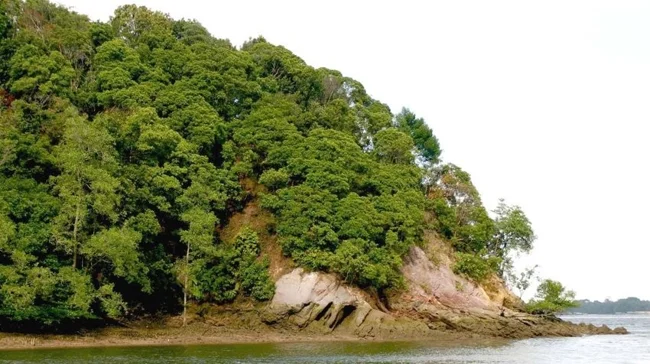
The island is now closed to outsiders
Despite the inaccuracies, Goodall did acknowledge a certain degree of jurisdiction:
The press has dubbed me the Laird of Serimbun, and since I am the only authority on the island, and the staff consists of two Chinese and one Javanese, I suppose the title is quite appropriate.
Despite its geographical isolation, William Goodall was active in Singaporean society. He corresponded regularly with the Straits Times on matters relating to the natural history of Serimbun. He once purchased the Kapal Hantu, a Malay ghost ship, which he donated to the Raffles Museum. The Manchester Regiment continued to be stationed in Singapore, and Goodall was always a prominent figure at the annual commemorations. He had a gift for storytelling, and often travelled to Singapore to give radio broadcasts, sharing fascinating stories about his life on the island.
William Arthur Bates Goodall died in 1941. In the 1970s, Pulau Sarimbun became part of the Singapore Air Force’s live firing range and was closed to the public.












